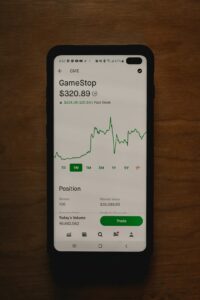How to Use Forex Gold Prices to Make Better Trading Decisions
Gold has always been considered a safe-haven asset, especially during times of economic uncertainty. As a result, it has become one of the most popular commodities to trade in the forex market. Understanding how to use forex gold prices to make better trading decisions can greatly enhance your chances of success in the market.
1. Understanding the Factors that Influence Gold Prices:
Before delving into how to use gold prices for trading decisions, it is essential to understand the factors that influence gold prices. Gold prices are primarily driven by supply and demand dynamics. Some of the key factors that affect gold prices include:
a) Economic conditions: Gold tends to perform well during periods of economic uncertainty or instability. When the global economy is facing challenges, investors flock to gold as a safe-haven investment.
b) Inflation: Gold is often seen as a hedge against inflation. When inflation rises, the value of fiat currencies tends to decline, leading investors to seek refuge in gold.
c) Geopolitical events: Political tensions, conflicts, or any other major geopolitical events can impact gold prices significantly. Investors often turn to gold during periods of geopolitical instability.
d) Central bank policies: Central banks play a crucial role in influencing gold prices. When central banks implement loose monetary policies or engage in quantitative easing, investors often view gold as a safe investment, which can drive up its prices.
2. Analyzing Gold Price Charts:
One of the key tools for utilizing gold prices for trading decisions is technical analysis. Technical analysis involves studying historical price charts to identify patterns and trends. There are several important elements to consider when analyzing gold price charts:
a) Support and resistance levels: Support and resistance levels are key areas on a price chart where the price tends to reverse. Identifying these levels can help traders determine potential entry and exit points.
b) Trend lines: Trend lines are lines drawn on a price chart to connect the highs or lows of an asset’s price movement. They help traders identify the direction of the trend and potential turning points.
c) Moving averages: Moving averages are calculated by averaging the closing prices over a specific period. They help smooth out price fluctuations and identify trends.
d) Oscillators: Oscillators, such as the Relative Strength Index (RSI) or Stochastic Oscillator, can provide insights into overbought or oversold conditions, indicating potential reversals.
3. Correlations with Other Assets:
Understanding the correlation between gold prices and other assets can also aid in making better trading decisions. Gold is often negatively correlated with the US dollar. When the US dollar weakens, gold prices tend to rise, and vice versa. Similarly, gold prices can be influenced by the performance of equity markets, interest rates, and oil prices. By observing these correlations, traders can gain insights into potential market movements and make more informed trading decisions.
4. Fundamental Analysis:
In addition to technical analysis, traders should also consider fundamental factors that could impact gold prices. Keeping an eye on economic data releases, central bank statements, and geopolitical developments can provide valuable insights into potential price movements. Understanding the broader macroeconomic environment is crucial for making informed decisions.
5. Risk Management:
Lastly, no trading strategy is complete without proper risk management. Gold prices can be volatile, and traders should always employ risk management techniques to protect their capital. This includes setting stop-loss orders, diversifying their portfolio, and avoiding excessive leverage.
In conclusion, utilizing forex gold prices to make better trading decisions requires a comprehensive understanding of the factors that influence gold prices, technical analysis tools, correlations with other assets, fundamental analysis, and risk management techniques. By combining these elements, traders can enhance their trading strategies and increase their chances of success in the forex market.






